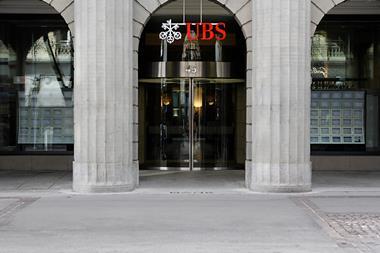UK - More than half of occupational pension funds in the UK already use soft compulsion to gain new members, according to the Office for National Statistics (ONS).
The survey - the Occupational Pension Schemes Annual Report 2010 - also showed that the number of active members in funds has fallen to levels not seen since the early 1950s, when the country's Government Actuary Department (GAD) first launched the survey - something the National Association of Pension Funds (NAPF) called "astonishing".
According to the report, the number of open occupational schemes using auto-enrolment at the end of 2010 to gain active members reached 53% at the end of last year, with a further 7% compelling part of their workforce to save in their fund.
A year ahead of the official launch of auto-enrolment in the UK, ONS findings show that nearly three-quarters of employees with defined benefit schemes at least compelled part of their workforce into an occupational fund - with 61% of funds auto-enrolling the entire workforce, while a further 12% chose to do so with at least part of their employees.
Among defined contribution occupational schemes, just over half enrolled all workers, while a further 2% chose to focus on at least part of the workforce.
Both percentages have increased dramatically since 2004, when separate records for the two scheme types began.
At the time, less than half of DB schemes employed auto-enrolment across all employees, while only 28% of occupational DC funds nudged all hires into saving.
The survey also found that there had been a noticeable drop in active members across all occupational schemes since peaking more than 50 years ago.
Sarah Levy, head of pension analysis at the ONS, said: "In 1953, we've got 6.2m active members. That rose to a peak of 12.2m in 1967, and it's now fallen to 8.3m active members."
She indicated that 2010 figures were the lowest seen since the 1950s and that there was a stark difference between membership in the private sector and the public sector, which has not always been the case.
"If we look in a bit more detail at the difference between the private sector and the public sector, we can see that, in 1953, there is an exactly equal split between private and public sector at 3.1m members each," Levy added.
Attempting to explain the drop in members, Paul Jayson of consultancy Barnett Waddingham said: "One conclusion is that commercial and other pressures have led companies to cut back their spend on providing 'gold-plated' defined benefit pensions due to rising costs and increased compliance and governance duties, whereas these pressures have not had the same effect in the public sector, where costs are met from tax revenues.
"For those of us who have worked in the pensions industry for many years, it is sad to see how increased cost and legislative burdens have caused employers to turn their backs on providing good pension benefits to their staff.
"The government's 'something is better than nothing' attitude with auto-enrolment will do nothing to reverse this trend."
The NAPF, meanwhile, has said the drop-off in active membership was "astonishing", but that rising unemployment might have played its part.
"People are thinking about today and putting tomorrow on hold, and unfortunately saving into a pension is being seen as a luxury," the organisation's chief executive Joanne Segars said.
She added that the introduction auto-enrolment would do its part to correct this imbalance, but warned that any delays to the reforms - widely rumoured in recent weeks, with former chancellor Alistair Darling arguing it would be equal to admitting defeat - must not be considered.












No comments yet